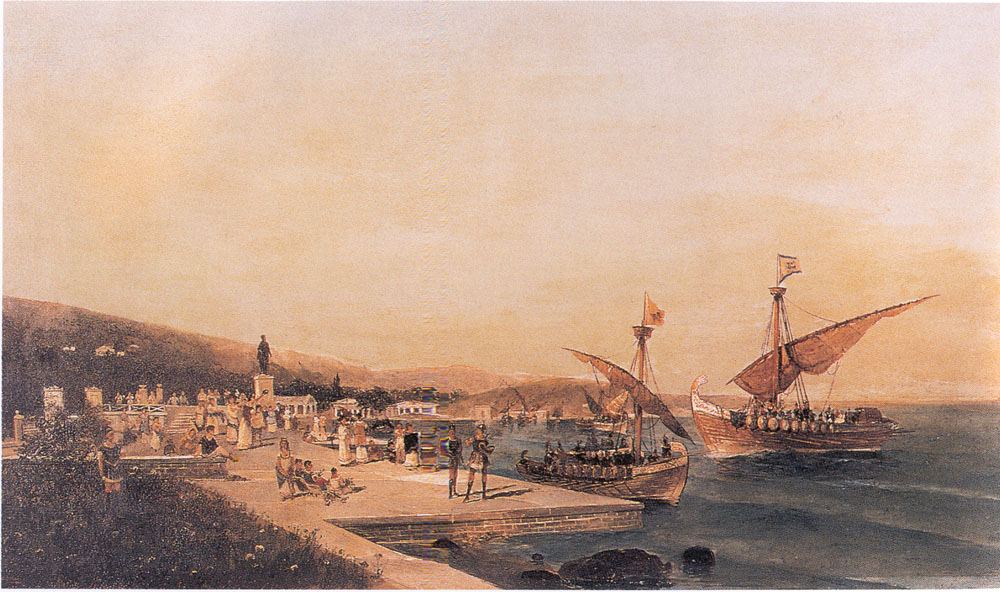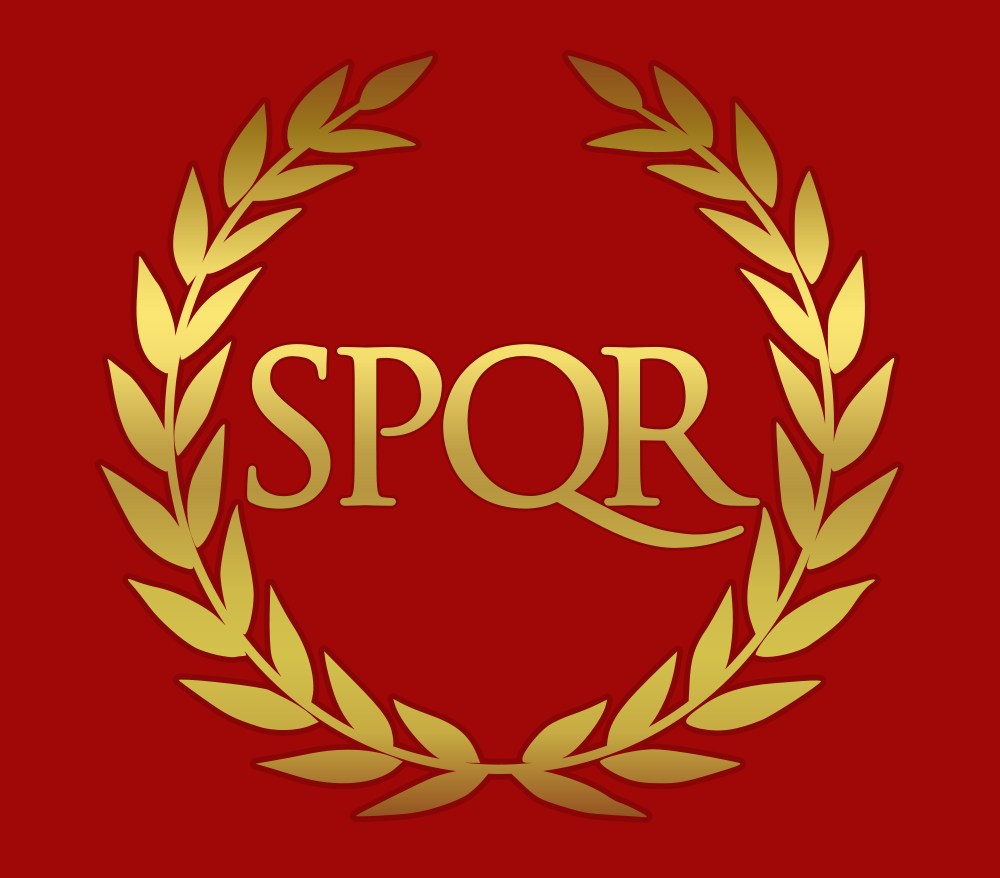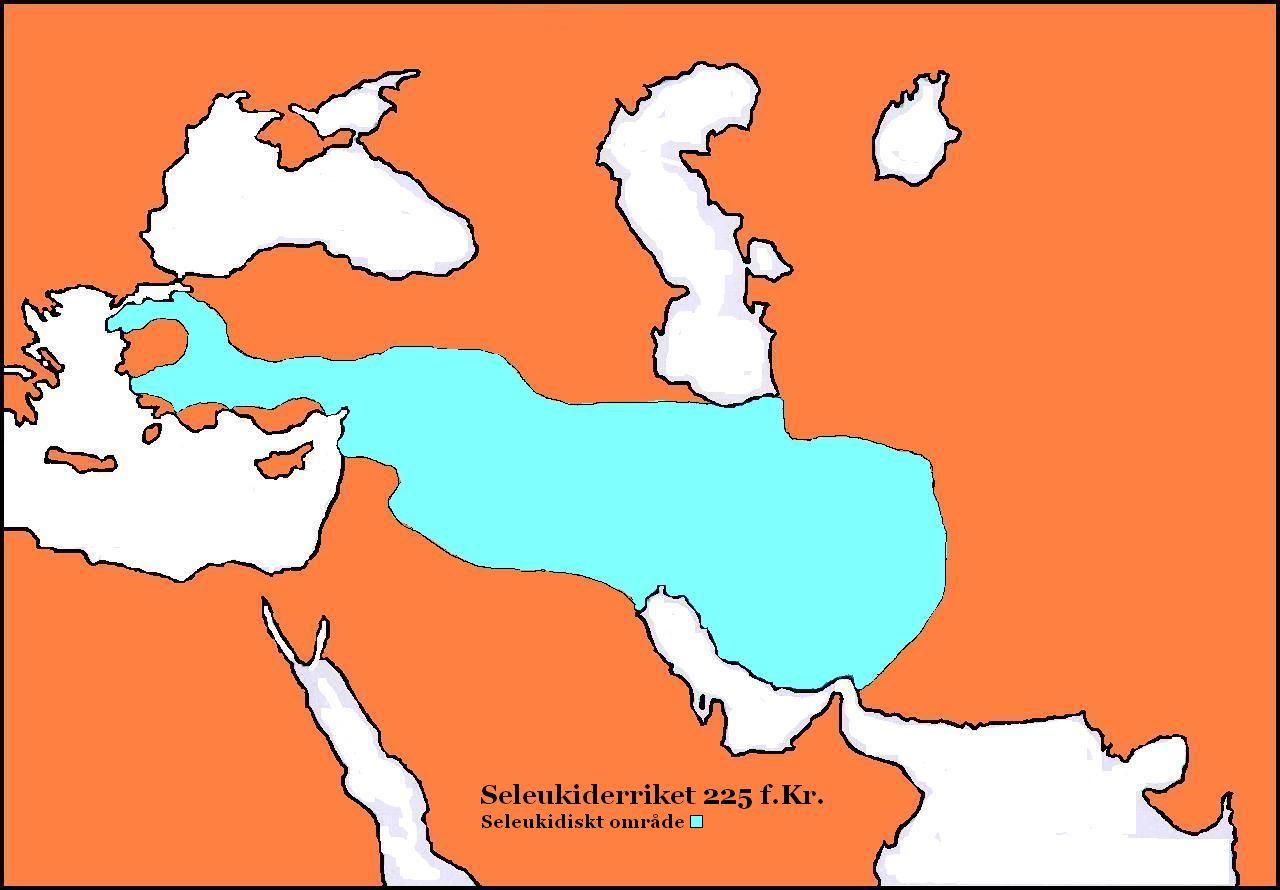|
Demetrias
Demetrias ( grc, Δημητριάς) was a Greek city in Magnesia in ancient Thessaly (east central Greece), situated at the head of the Pagasaean Gulf, near the modern city of Volos. History It was founded in 294 BCE by Demetrius Poliorcetes, who removed thither the inhabitants of Nelia, Pagasae, Ormenium, Rhizus, Sepias, Olizon, Boebe and Iolcos, all of which were afterwards included in the territory of Demetrias. It soon became an important place, and the favourite residence of the Macedonian kings. It was favourably situated for commanding the interior of Thessaly, as well as the neighbouring seas; and such was the importance of its position that it was called by Philip V of Macedon one of the three fetters of Greece, the other two being Chalcis and Corinth. In 196 BCE, the Romans, victorious in the Battle of Cynoscephalae over Philip V in the previous year, took possession of Demetrias and garrisoned the town. Four years later the Aetolian League captured it by ... [...More Info...] [...Related Items...] OR: [Wikipedia] [Google] [Baidu] |
Volos
Volos ( el, Βόλος ) is a coastal port city in Thessaly situated midway on the Greek mainland, about north of Athens and south of Thessaloniki. It is the sixth most populous city of Greece, and the capital of the Magnesia regional unit of the Thessaly Region. Volos is also the only outlet to the sea from Thessaly, the country's largest agricultural region. With a population of 144,449 (2011), the city is an important industrial centre, and its port provides a bridge between Europe and Asia. Volos is the newest of the Greek port cities, with a large proportion of modern buildings erected following catastrophic earthquakes in 1955. It includes the municipal units of Volos, Nea Ionia and Iolkos, as well as smaller suburban communities. The economy of the city is based on manufacturing, trade, services and tourism. Home to the University of Thessaly, the city also offers facilities for conferences, exhibitions and major sporting, cultural and scientific events. Volos parti ... [...More Info...] [...Related Items...] OR: [Wikipedia] [Google] [Baidu] |
Iolcos
Iolcus (; also rendered ''Iolkos'' ; grc, Ἰωλκός and Ἰαωλκός; grc-x-doric, Ἰαλκός; ell, Ιωλκός) is an ancient city, a modern village and a former municipality in Magnesia, Thessaly, Greece. Since the 2011 local government reform it is part of the municipality Volos, of which it is a municipal unit. It is located in central Magnesia, north of the Pagasitic Gulf. Its land area is 1.981 km². The municipal unit is divided into three communities, Agios Onoufrios (pop. 475), Anakasia (pop. 1012) and Ano Volos (pop. 651), with a total population of 2,138 (2011 census). The seat of the former municipality was the village of Ano Volos. Mythology According to ancient Greek mythology, Aeson was the rightful king of Iolcus, but his half-brother Pelias usurped the throne. It was Pelias who sent Aeson's son Jason and his Argonauts to look for the Golden Fleece. The ship Argo set sail from Iolcus with a crew of fifty demigods and princes under Jason's lea ... [...More Info...] [...Related Items...] OR: [Wikipedia] [Google] [Baidu] |
Philip V Of Macedon
Philip V ( grc-gre, Φίλιππος ; 238–179 BC) was king ( Basileus) of Macedonia from 221 to 179 BC. Philip's reign was principally marked by an unsuccessful struggle with the emerging power of the Roman Republic. He would lead Macedon against Rome in the First and Second Macedonian Wars, losing the latter but allying with Rome in the Roman-Seleucid War towards the end of his reign. Early life Philip was the son of Demetrius II of Macedon and Chryseis. Philip was nine years old when his father died 229 BC. His elder paternal half sister was Apama III. Philips's great-uncle, Antigonus III Doson, administered the kingdom as regent until his death in 221 BC when Philip was seventeen years old. Philip was attractive and charismatic as a young man. A dashing and courageous warrior, he was compared to Alexander the Great and was nicknamed ''beloved of the Hellenes'' () because he became, as Polybius put it, "...the beloved of the Hellenes for his charitable inclination". A ... [...More Info...] [...Related Items...] OR: [Wikipedia] [Google] [Baidu] |
Nelia
Nelia or Neleia ( grc, Νηλία or Νήλεια) was a town of Magnesia in ancient Thessaly; Demetrias was situated between it and Iolcus. Strabo reports that when Demetrios Poliorketes Demetrius I (; grc, Δημήτριος; 337–283 BC), also called Poliorcetes (; el, Πολιορκητής, "The Besieger"), was a Macedonian nobleman, military leader, and king of Macedon (294–288 BC). He belonged to the Antigonid dynast ... founded Demetrias he moved the population of Nelia thither (293 BCE). Some archaeologists have related Nelia to the remains found on the Goritsa hill, while other sources state its site is unlocated. References Populated places in ancient Thessaly Former populated places in Greece Ancient Magnesia Lost ancient cities and towns {{AncientThessaly-geo-stub ... [...More Info...] [...Related Items...] OR: [Wikipedia] [Google] [Baidu] |
Ormenium
Ormenium ( grc, Ὀρμένιον) was a town of ancient Thessaly, mentioned in the Catalogue of Ships in Homer's ''Iliad'', along with Hypereia and Asterium, as belonging to Eurypylus. In Greek mythology, it was said to have been founded by Ormenus, the grandson of Aeolus, and was the birthplace of Phoenix (a grandson of Ormenus). Strabo identifies this town with a place in Magnesia named Orminium, situated at the foot of Mt. Pelion near the Pagasaean Gulf, at the distance of 27 stadia from Demetrias, on the road passing through Iolcus, which was 7 stadia from Demetrias and 20 from Orminium. William Martin Leake, however, observes that the Ormenium of Homer can hardly have been the same as the Orminium of Strabo, since it appears from the situation of Asterium that Eurypylus ruled over the plains of Thessaliotis, which are watered by the Apidanus and Enipeus. The questioning of Strabo's equation of Ormenium with Orminium is still the norm among current scholars; some believin ... [...More Info...] [...Related Items...] OR: [Wikipedia] [Google] [Baidu] |
Rhizus
:''Rhizus may also refer to Ριζαίον on the Black Sea, modern Rize.'' Rhizus or Rhizous ( el, Ριζούς (ο)) was a town and polis of Magnesia in ancient Thessaly, whose inhabitants were transported by Demetrios Poliorketes to Demetrias upon the foundation of the latter city. We learn from Periplus of Pseudo-Scylax that Rhizus was outside the Pagasaean Gulf upon the exterior ( Aegean) shore. In Strabo's time, it was a village dependent on Demetrias. Coins minted by Rhizus have been found, dated in the 4th century BCE The 4th century BC started the first day of 400 BC and ended the last day of 301 BC. It is considered part of the Classical era, epoch, or historical period. This century marked the height of Classical Greek civilization in all of its aspects .... The site of Rhizus is at the modern village of Tarsanas (Ταρσανάς). References External links Ancient ThessalyAncient Greek CoinsNumisWikiClassical Numismatic Group Populated places in a ... [...More Info...] [...Related Items...] OR: [Wikipedia] [Google] [Baidu] |
Roman–Seleucid War
The Seleucid War (192–188 BC), also known as the War of Antiochos or the Syrian War, was a military conflict between two coalitions led by the Roman Republic and the Seleucid Empire. The fighting took place in modern day southern Greece, the Aegean Sea and Asia Minor. The war was the consequence of a "cold war" between both powers, which had started in 196 BC. In this period, the Romans and the Seleucids attempted to settle spheres of influence by forging alliances with the small Greek city-states. The fighting ended with a clear Roman victory. In the Treaty of Apamea, the Seleucids were forced to give up Asia Minor, which fell to Roman allies. As a main result of the war, the Roman Republic gained hegemony over the Greek city-states and Asia Minor and became the only remaining major power around the Mediterranean Sea. Prelude Antiochus III the Great, the Seleucid king, first became involved with Greece when he signed an alliance with King Philip V of Macedon in 203 BC.Green ... [...More Info...] [...Related Items...] OR: [Wikipedia] [Google] [Baidu] |
Boebe (Thessaly)
Boebe or Boibe ( grc, Βοίβη) was a city of Magnesia in ancient Thessaly, mentioned by Homer in the Catalogue of Ships, and situated on the eastern side of the lake, called after it Boebeis Lacus. The lake is frequently mentioned by the ancient writers, but the name of the town rarely occurs. The town of Boebe was used by Demetrius I of Macedon for the foundation of Demetrias, and was at a later time dependent upon it. Its site is traditionally identified with ruins at Voivis near Kanalia. William Martin Leake visited the site in the 19th century and reported that "It occupied a height advanced in front of the mountain, sloping gradually towards the plain, and defended by a steep fall at the back of the hill. It appears to have been constructed of Hellenic masonry, properly so called. The acropolis may be traced on the summit, where several large quadrangular blocks of stones are still in their places, among more considerable ruins formed of small stones and mortar. Of the t ... [...More Info...] [...Related Items...] OR: [Wikipedia] [Google] [Baidu] |
Olizon
Olizon ( grc, Ὀλιζών) was an ancient Greek town and polis (city-state) of Magnesia located in the region of Thessaly.. Olizon is mentioned by Homer, who gives it the epithet of "rugged"; and in the Catalogue of Ships in the ''Iliad'', Olizon formed part of the territories of Philoctetes. It is also mentioned in the Periplus of Pseudo-Scylax as a city in Magnesia, together with Iolcus, Spalauthra, Methone and Coracae. In Strabo's time, it formed part of the dependent territories of Demetrias on a section of the coast where Thaumacia and Meliboea also stood. Plutarch wrote that it was located opposite Artemisium in Euboea Evia (, ; el, Εύβοια ; grc, Εὔβοια ) or Euboia (, ) is the second-largest Greek island in area and population, after Crete. It is separated from Boeotia in mainland Greece by the narrow Euripus Strait (only at its narrowest poin .... Olizon is located at the ''Palaiokastro'' (old fort) at Agios Andreas. References Sources * * A ... [...More Info...] [...Related Items...] OR: [Wikipedia] [Google] [Baidu] |
Sepias
Sepias ( grc, Σηπιάς) was a town of Magnesia in ancient Thessaly, near the cape of the same name. Strabo relates that Sepias was one of the towns, along with Nelia, Pagasae, Ormenium, Rhizus, Olizon, Boebe, and Iolcus that were reduced to mere villages when being depopulated by Demetrius Poliorcetes to populate Demetrias. At the cape, the fleet of Xerxes I suffered heavily during a storm shortly before the Battle of Thermopylae The Battle of Thermopylae ( ; grc, Μάχη τῶν Θερμοπυλῶν, label=Greek, ) was fought in 480 BC between the Achaemenid Persian Empire under Xerxes I and an alliance of Greek city-states led by Sparta under Leonidas I. Lasting o .... The town (or fort) of Sepias is located at the modern site of Pouri. References Populated places in ancient Thessaly Ancient Magnesia Former populated places in Greece {{AncientThessaly-geo-stub ... [...More Info...] [...Related Items...] OR: [Wikipedia] [Google] [Baidu] |
Pagasae
Pagasae or Pagases ( el, Παγασαί, Pagasaí), also Pagasa, was a town and polis (city-state) of Magnesia in ancient Thessaly, currently a suburb of Volos. It is situated at the northern extremity of the bay named after it (Παγασητικὸς κόλπος, or la, Pagasaeus Sinus). Pagasae is celebrated in mythology as the port where Jason built the ship ''Argo'', and from which he sailed upon his adventurous voyage: hence some of the ancients derived its name from the construction of that vessel, (from πήγνυμι), but others from the numerous and abundant springs which were found at this spot. Apollonius of Rhodes describes the setting vividly in the first book of his ''Argonautica''. Pagasae was conquered by Philip II of Macedon after the defeat of Onomarchus; in Diodorus's report the place is spelt Παγαί - ''Pagaí''. On the foundation of Demetrias in 290 or 293 BCE, Pagasae was one of the towns whose inhabitants were transferred to the new city; but a ... [...More Info...] [...Related Items...] OR: [Wikipedia] [Google] [Baidu] |
Antiochus III
Antiochus III the Great (; grc-gre, Ἀντίoχoς Μέγας ; c. 2413 July 187 BC) was a Greek Hellenistic king and the 6th ruler of the Seleucid Empire, reigning from 222 to 187 BC. He ruled over the region of Syria and large parts of the rest of western Asia towards the end of the 3rd century BC. Rising to the throne at the age of eighteen in 222 BC, his early campaigns against the Ptolemaic Kingdom were unsuccessful, but in the following years Antiochus gained several military victories and substantially expanded the empire's territory. His traditional designation, ''the Great'', reflects an epithet he assumed. He also assumed the title ''Basileus Megas'' (Greek for "Great King"), the traditional title of the Persian kings. A militarily active ruler, Antiochus restored much of the territory of the Seleucid Empire, before suffering a serious setback, towards the end of his reign, in his war against Rome. Declaring himself the "champion of Greek freedom against Roman dominat ... [...More Info...] [...Related Items...] OR: [Wikipedia] [Google] [Baidu] |




